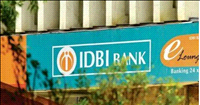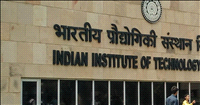BT announces preferred suppliers for its ''21st century network programme''
30 Apr 2005
Mumbai: BT, earlier British Telecom, (2004 turnover: £18,519 million with profit before goodwill amortisation, exceptional items and taxation of £2,013 million) has sleeted its preferred suppliers for delivering its '21st century network', claimed by the company to be the world's most radical next generation network transformation programme.
It will require an investment by BT of up to £10 billion over the next five years and will put the UK at the cutting edge of innovation, providing industry with a real competitive advantage, and consumers with a world-class communication service for the 21st century.
The announcement of the preferred supplier list is the culmination of two years of discussions and negotiations with over 300 potential technology suppliers from all corners of the world, in "an extremely competitive process in what is one of the largest single procurement programmes ever undertaken in the communications industry".
The final list of eight preferred suppliers has been chosen to work with BT in five strategic domains:
- Fujitsu and Huawei have been chosen in the access domain which will link BT's existing access network with the new 21CN
- Alcatel, Cisco and Siemens have been selected as preferred suppliers for metro nodes which provide routing and signalling for 21CN's voice, data and video services
- Cisco and Lucent will be 21CN's preferred suppliers for core nodes providing high capacity and cost efficient connections between metro nodes
- Ericsson has been selected in the i-node domain - in essence the intelligence that controls the services
- Ciena and Huawei have been chosen in the transmission domain to supply the optical electronics that will convert the signals carried at high capacity over the cables connecting the metro and core nodes.
The selection of these eight suppliers will allow dozens of smaller and innovative subcontractors to become involved in the delivery of the 21st century network. The programme will attract significant new investment and employment to the UK.
Matt Bross, BT Group's chief technology officer said, "The capability that BT is putting in place through this investment in 21CN is unequalled anywhere in the world. It will enable us to introduce new services at a speed that is simply impossible today."
Paul Reynolds, BT Wholesale chief executive, the BT Board member responsible for the programme added, "21 CN is a key infrastructure that will fuel the UK economy and provide a flexible way for consumers to use new services. The selection of the preferred suppliers is an incredibly important building block towards that vision. 21CN will also radically reduce BT's cost base, with identified savings of around one billion pounds a year."
In order to achieve world class delivery of the programme, the selection of suppliers has been about much more than choosing technology and selecting partners. The commercial agreements, which the company expects to conclude over the summer, will include open standards and a focus on whole life costs.
Preferred suppliers have been chosen across each of five strategic domains. The domains are access, metro, core, i-nodes, transmissions.
| Access | Metro | Core | i-Nodes | Transmission |
| Fujitsu | Alcatel | Cisco | Ericsson | Ciena |
| Huawei | Cisco | Lucent | Huawei | |
| Siemens |
- Access: the access domain in this context is the aggregation equipment (multi-service access node - MSANs) which will link BT's existing access network, initially carrying voice and data services from end users on to the 21CN core IP based network.
- Metro nodes provide the routing and signalling functions for the unified 21CN network for voice, data and video.
- Core nodes are the high capacity, large scale routers providing cost efficient connections between metro nodes.
- i-node is where the service execution functionality is located - in essence the intelligence that controls services. In the 21CN context, this includes soft switches, network intelligence and bandwidth management capabilities.
- Transmission includes the optical fibre transport infrastructure that connects all nodes in 21CN but also the electronics that converts the signals carried at high capacity over the cables connecting the MSANs, metro and core nodes. Much of the optical fibre infrastructure is already in place and today we are announcing the preferred suppliers for the optical electronics.


















.jpg)











